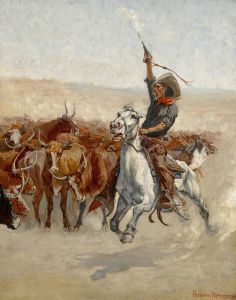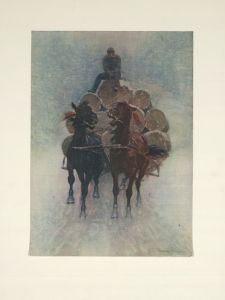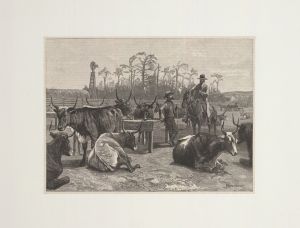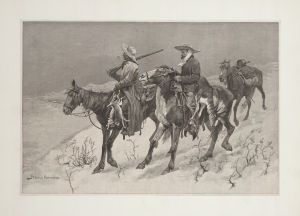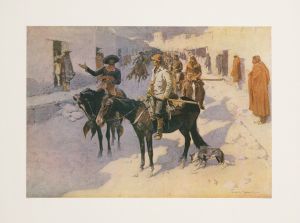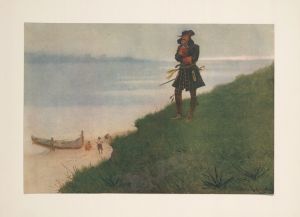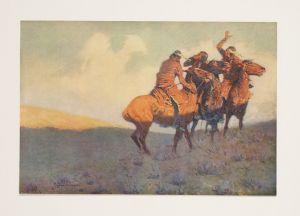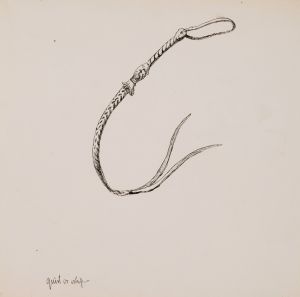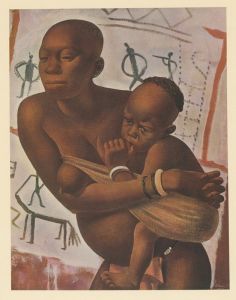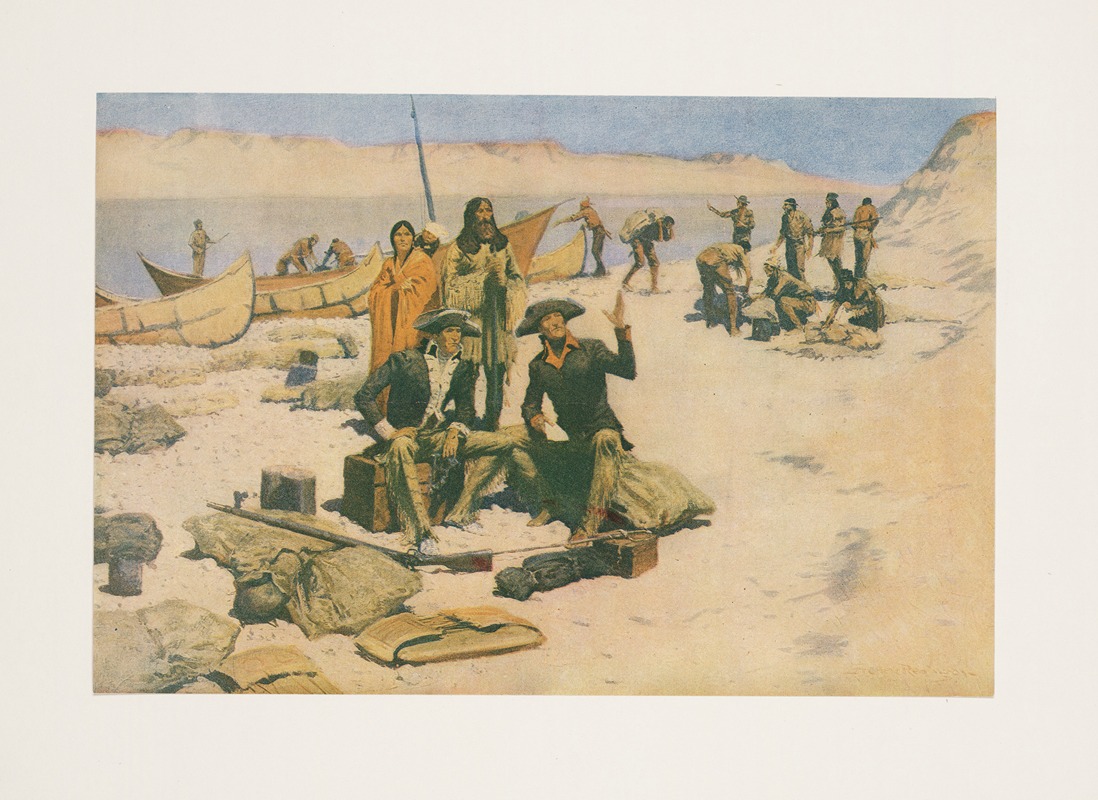
The great explorers. VIII-Lewis and Clark
A hand-painted replica of Frederic Remington’s masterpiece The great explorers. VIII-Lewis and Clark, meticulously crafted by professional artists to capture the true essence of the original. Each piece is created with museum-quality canvas and rare mineral pigments, carefully painted by experienced artists with delicate brushstrokes and rich, layered colors to perfectly recreate the texture of the original artwork. Unlike machine-printed reproductions, this hand-painted version brings the painting to life, infused with the artist’s emotions and skill in every stroke. Whether for personal collection or home decoration, it instantly elevates the artistic atmosphere of any space.
Frederic Remington's painting "The Great Explorers. VIII - Lewis and Clark" is a notable work that captures a significant moment in American history. Frederic Remington (1861-1909) was an American painter, illustrator, sculptor, and writer known for his depictions of the American Old West. His works often featured cowboys, Native Americans, and the U.S. Cavalry, and he played a crucial role in shaping the popular image of the American frontier.
"The Great Explorers. VIII - Lewis and Clark" is part of a series by Remington that illustrates the famous expedition of Meriwether Lewis and William Clark. Commissioned by President Thomas Jefferson, the Lewis and Clark Expedition (1804-1806), also known as the Corps of Discovery Expedition, was the first American expedition to cross the western portion of the United States. The primary objective was to explore and map the newly acquired Louisiana Territory and find a practical route across the western half of the continent. Additionally, the expedition aimed to establish an American presence before European powers attempted to claim the land.
Remington's painting captures the spirit of exploration and adventure associated with Lewis and Clark's journey. While specific details about this particular painting are limited, Remington's style typically involved dynamic compositions and a keen attention to detail, which brought historical events to life. His works often emphasized the ruggedness of the landscape and the challenges faced by explorers and settlers.
The Lewis and Clark Expedition was a monumental event in American history, marking a significant step in the westward expansion of the United States. The expedition set out from St. Louis, Missouri, in May 1804 and traveled up the Missouri River. The team, consisting of approximately 45 members, including soldiers, civilians, and one Native American woman, Sacagawea, who served as an interpreter and guide, faced numerous challenges, including harsh weather, difficult terrain, and the need to establish diplomatic relations with various Native American tribes.
Throughout their journey, Lewis and Clark documented over 200 new plant and animal species and produced detailed maps of the region. Their reports provided valuable information about the geography, biology, and ethnography of the western territories. The expedition returned to St. Louis in September 1806, having traveled over 8,000 miles.
Remington's portrayal of Lewis and Clark is significant not only for its artistic merit but also for its contribution to the cultural memory of the expedition. His work helped to romanticize and popularize the narrative of American exploration and expansion, reinforcing the idea of Manifest Destiny that was prevalent during the 19th century.
In summary, "The Great Explorers. VIII - Lewis and Clark" by Frederic Remington is a representation of a pivotal moment in American history, capturing the essence of exploration and the challenges faced by the early pioneers of the American West. Through his art, Remington contributed to the enduring legacy of Lewis and Clark's journey and the broader story of America's westward expansion.





